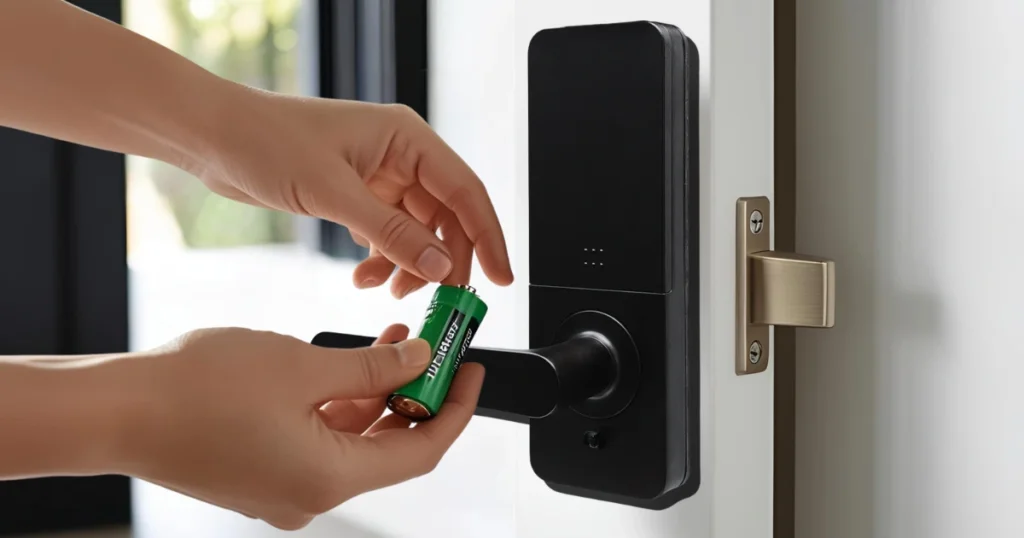Smart lock battery maintenance: Step-by-step guide to replacing batteries and optimizing performance
Proper maintenance of your smart lock battery ensures reliable performance and long-lasting security. Here’s everything you need to know about keeping your smart lock powered efficiently.

1. Types of Batteries Used in Smart Locks
Most smart locks run on batteries, with two main types:
- AA Alkaline Batteries – Common in basic smart locks, lasting 6 months to a year.
- Rechargeable Lithium-Ion Batteries – Used in high-tech locks, lasting 2-3 months per charge.
2. Choosing the Right Battery
Using the correct battery model is crucial for optimal performance and safety.
- Correct Polarity – Ensure the battery matches the smart lock’s polarity (e.g., C+ C- / P+ P-). Using the wrong model can result in:
- ❌ Battery Damage – May short-circuit or degrade the battery.
- ❌ Lock Malfunction – Smart lock may not power on or behave unpredictably.
- ❌ Overheating & Safety Risks – Wrong battery type can overheat, swell, or cause fire hazards.
- Manufacturer-Recommended Batteries – Always use the type specified in the user manual.
3. Best Charging Practices for Lithium Batteries
If your smart lock uses a rechargeable lithium-ion battery, follow these tips for safe and efficient charging:
- Avoid Fast Charging – Fast chargers can shorten battery lifespan and cause overheating.
- Use the Recommended Charger – Always use the original charger or one with the correct voltage.
- Charge Before Full Depletion – Avoid letting the battery drain completely, as this can reduce lifespan.
4. Best Practices for AA Alkaline Batteries
For smart locks using AA alkaline batteries, consider these tips:
- Use High-Quality Alkaline Batteries – Low-quality or expired batteries may leak and damage the lock.
- Replace in Sets – Always replace all batteries at once to maintain consistent power output.
- Store Properly – Keep spare batteries in a cool, dry place to prevent leakage.
- Avoid Mixing Brands or Old & New Batteries – Using different brands or partially used batteries can lead to inconsistent power supply and shorten lifespan.
5. Battery Life Optimization
To extend your smart lock’s battery life:
- Keep Firmware Updated – Manufacturers may release updates that improve power efficiency.
- Disable Unnecessary Features – Reduce battery drain by turning off unused functions like auto-lock timers or excessive notifications.
- Monitor Low Battery Alerts – Most smart locks provide warnings when the battery is low; replace or recharge it promptly.
- Store Spare Batteries – If using AA batteries, keep extras handy to avoid lockouts.
6. Emergency Power Solutions
In case of a dead battery, many smart locks provide alternative power options:
- USB Emergency Power – Allows temporary charging via a power bank.
- Mechanical Key Backup – Always keep the physical key in a secure place.
Smart Lock Battery Maintenance: Final Thoughts
Regular battery maintenance is essential for ensuring your smart lock functions smoothly. By using the right batteries, following safe charging practices, and monitoring power levels, you can maximize the lifespan and reliability of your smart lock.
Need a replacement battery? Explore compatible power options at Novalock Malaysia.
Follow Us for More Smart Lock Tips & Updates!
🌐 Facebook | Instagram
